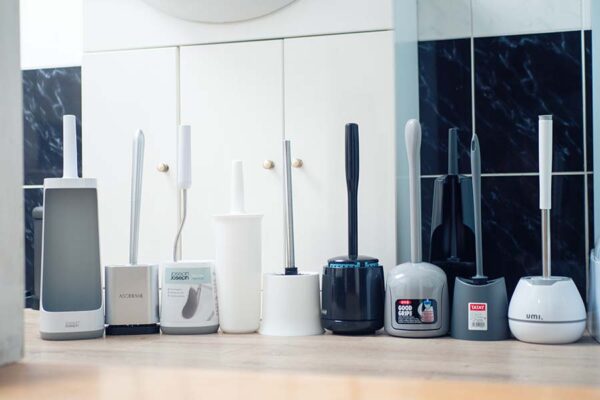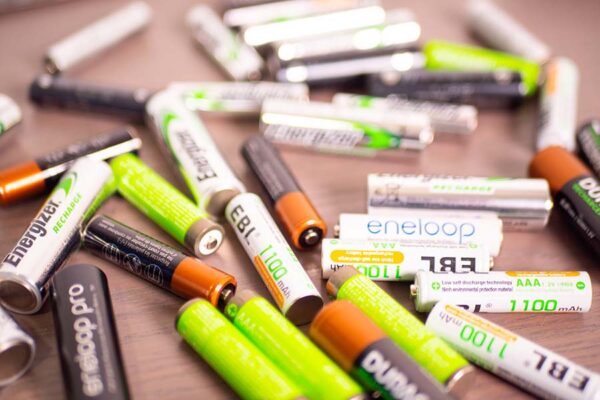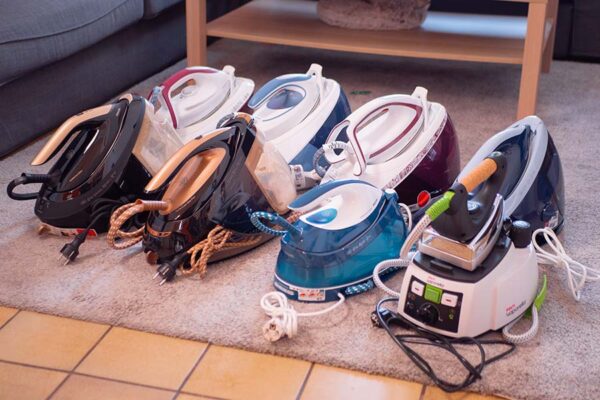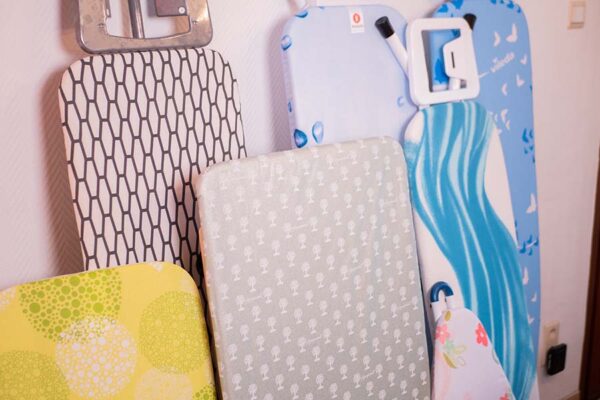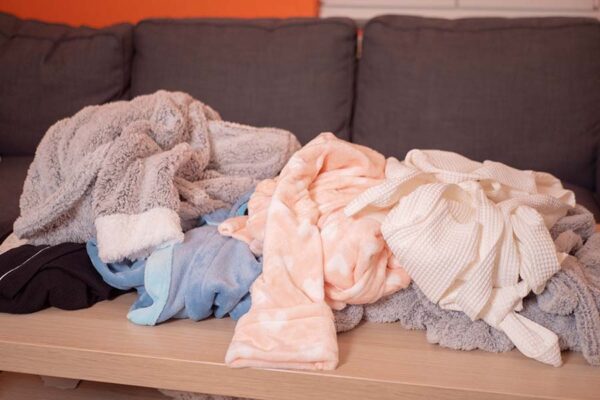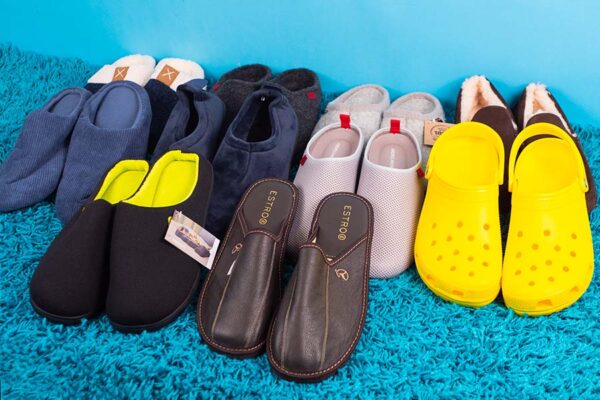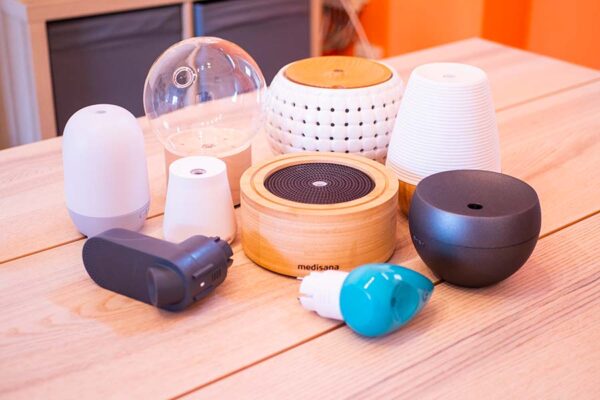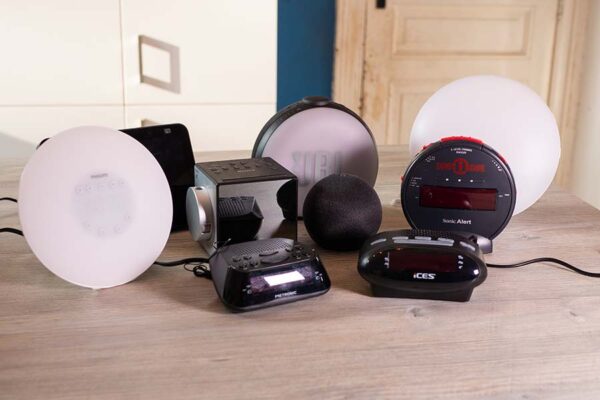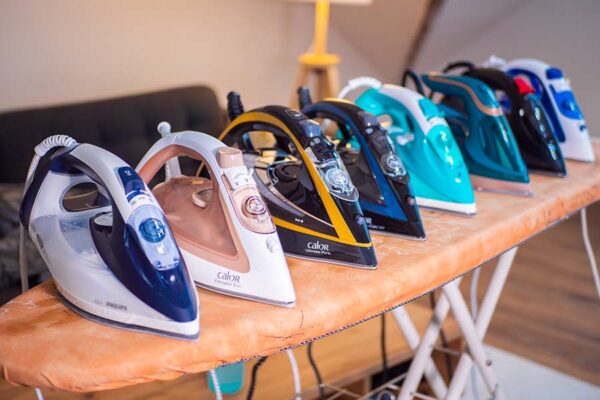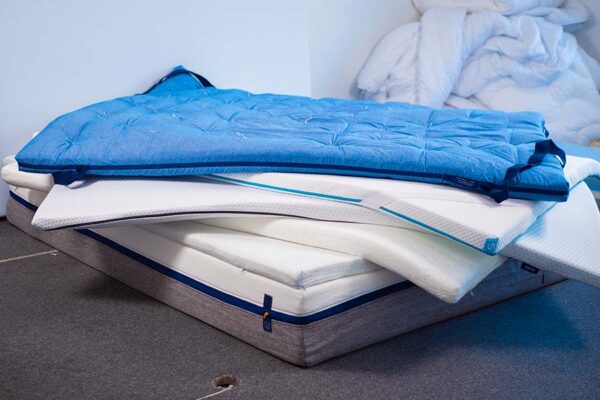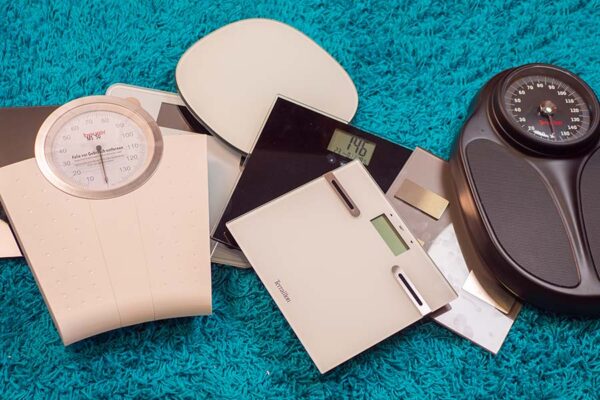Updated on 2 June 2023

This is the model that stood out the most during our tests for its quality/price ratio. Indeed, it is quite cheap to buy, but also to maintain since the change of the filter must be done every 6 to 8 months, which amounts to a maximum cost of approximately 80 £/year. This 3-layer filter (including active carbon) has proven to be the most effective at rapidly removing PM2.5 in its price range (at equivalent levels). We also found it ideal for reducing kitchen odours. Note that it also detects the air quality, allowing to adapt the speed accordingly in Auto mode. On the practical side, we underline the presence of the child lock, but also of the automatic stop (after 2, 4 or 8 hours), the Night mode and the Turbo mode in addition to its 3 basic speeds. Thanks to its handles, we found it easy to move from one room to another. Finally, its night mode and first speed were not detected by our sound level meter, proving its discretion at these levels. Nevertheless, it did rise to almost 55 dB in Turbo mode.
Levoit Core 400S
As well as having an intuitive and responsive display, this cleaner proved to be very efficient and quiet. The icing on the cake is a very attractive annual maintenance cost.

During our tests, this Levoit air purifier stood out from the competition in terms of performance. It removed allergens (PM2.5) faster than many other models in the same price range (for equivalent levels of pollution in the same room). Its automatic mode detects PM2.5 and increases the speed accordingly, but as it does not have an odour sensor, this was not the case while we were cooking. However, it did manage to reduce odours when we manually increased the speed. All this performance is possible thanks to its 3-layer True HEPA 13 filter with activated carbon. It needs to be changed every 6 to 12 months, which means a maintenance cost of €60 to €120/year. It should be noted that a filter specially designed for pet hair is also available but at a higher price. In terms of functions, this Levoit has four operating speeds, an Auto mode, a Night mode, a button to turn off the display lights, a child lock and a timer. It can also be controlled remotely via the VeSync app and can be connected to the Google Home automation ecosystem.
Philips Series i3000
Offering the best performance of this comparison, this connected model is equipped with a complementary application to the device. We recommend it especially for people with severe allergies.

During our tests, this purifier stood out for its efficiency. Faster than any other model we tested, it removed PM2.5 from a 10m³ room in record time (at equivalent levels). We also found that it was able to remove kitchen and pet odours quickly. Its automatic mode managed to detect the air quality (according to 3 parameters that it indicates with colours: gas, allergens and PM2.5) and to adapt its speed accordingly. Given its price, we were pleased to be able to rely on its Clean Home+ application. It gives access to the air quality history and remote control (including delayed starts/stops according to the mode of our choice) which worked every time. On the negative side, the Turbo mode is very noisy (63dB at 1m), the price is very high, the filters are also expensive (but must be changed every 3 years or so) and the translation of the application is not perfect. In our opinion, all this makes it a model more suitable for people with severe allergies or breathing difficulties.
Philips Series 800
It is one of the most efficient in this price range. It is very simple, with no unnecessary features and only the essentials, namely an on/off button, a touch screen and 3 speeds.

In our tests, the Philips 800 Series performed better at full speed to remove PM2.5 than most other models in this price category. We also found it interesting at full speed for removing kitchen odours. When it comes to noise, it is also more than satisfactory as its first 2 modes were simply not detected by our sound level meter at a distance of 1m. However, the Turbo mode was a little louder (52.7 dB). Moreover, we noted that its cost in filter per year was one of the lowest on the market with about £30/year. It is a 2-layer HEPA filter that filters 99.5% of particles down to 0.003 µm. This allows the purifier to reach a CDAR of 190 cubic metres per hour and is recommended for rooms up to 49 m². Finally, we noted 3 points that could be improved: the cable could have been longer, the on/off button on the back at the bottom of the device and the light that should have been turned off in standby mode for more comfortable use at night.
In addition to offering 4 levels of filtration, this device has a very good and reactive Auto mode. Efficient and practical, it can easily be used in different rooms of the house.Rowenta PU4020F0

The PU4020F0 is equipped with 4 types of filter: a pre-filter, an active carbon filter, an Allergy+ filter (HEPA) and a NanoCaptur filter (to capture formaldehyde, a gaseous pollutant). In addition, it incorporates pollution sensors that can be adjusted to 3 sensitivities. The device’s operation is based on an Auto mode and a Night mode in addition to the 4 filtration speeds, but it also has an automatic start or stop function (after 1, 2, 4 or 8 hours). With a CADR of 160 cubic metres per hour, it can be used in a living room or between several rooms. During our tests, its Auto mode detected kitchen odours and increased its speed accordingly. For PM2.5, it also proved to be effective (although a little slower than the Amazon Basics at equivalent levels). Finally, it also has the advantage of being extremely quiet in Night mode and at first speed, and of including variable light intensities to facilitate sleep when placed in a bedroom. However, the filters are a little bit more expensive (£60 to £120 per year for NanoCaptur, HEPA and active carbon filters).
Our selection
Our choice, Best budget Best mid-range Best high-end Budget alternative Mid-range alternative 




Amazon Basics AM6117-EU Levoit Core 400S Philips Series i3000 Philips Series 800 Rowenta PU4020F0 This purifier offers the best efficiency/price ratio of our selection as far as the removal of particles (PM2.5) is concerned. It is also convenient and instinctive to use, while being quiet. As well as having an intuitive and responsive display, this cleaner proved to be very efficient and quiet. The icing on the cake is a very attractive annual maintenance cost. Offering the best performance of this comparison, this connected model is equipped with a complementary application to the device. We recommend it especially for people with severe allergies. It is one of the most efficient in this price range. It is very simple, with no unnecessary features and only the essentials, namely an on/off button, a touch screen and 3 speeds. In addition to offering 4 levels of filtration, this device has a very good and reactive Auto mode. Efficient and practical, it can easily be used in different rooms of the house. £ 219.99 on Amazon £ 269.99 on Amazon See the price on Amazon See the price on Amazon
Selectos compares and tests hundreds of products to help you buy better. We sometimes receive a commission when you buy through our links, which helps fund our work. Learn moreWhy trust us ?
How did we do the test?
During our tests, we first checked the material quality and design of each air purifier. We also assessed their ergonomics, portability, access to the filter, as well as the quality of the filter and the cost of replacing it over the year.
We also tested the functionalities and performance of the purifiers by using them in a real situation. Twice (to check the consistency of the data) we had them clean a small 10m³ room in which we lit a candle by making smoke with matches and we timed their PM2.5 cleaning speed based on data from an external air quality sensor. Finally, we measured the noise emitted by each model at their different operating speeds.
How to choose your air purifier?
Useful for controlling indoor air quality, but also if you suffer from allergies, asthma or other respiratory problems, air purifiers are difficult to choose because of the many models available on the market and their intended use.
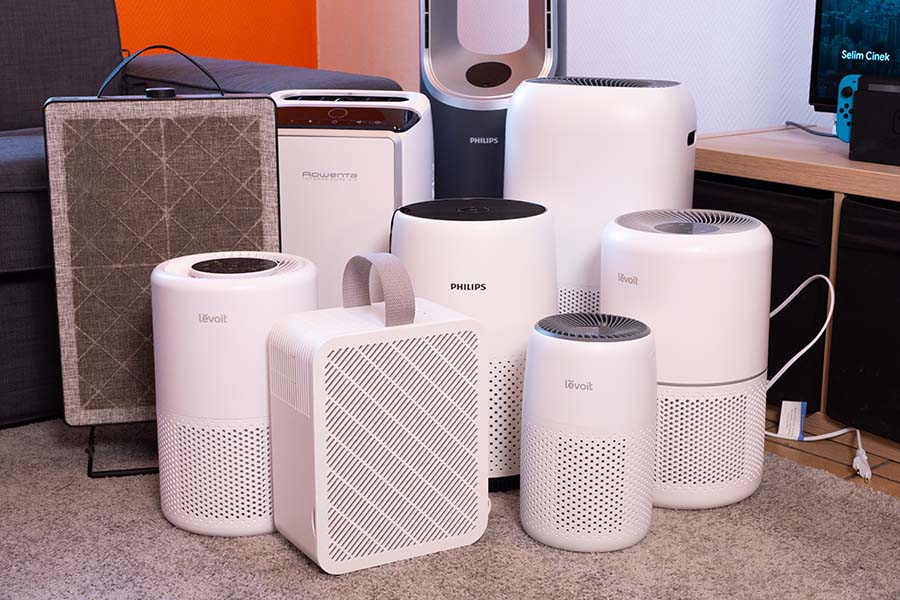
To understand how it works, it is necessary to be able to identify the different types of filters that exist:
- The pre-filter: it removes large particles from the air (such as hair and pet hair) before passing it through the filter itself. If the filter was in constant contact with these large particles, the purifier would be less effective and less durable. The pre-filter is usually washable and is often made of woven nylon or foam.
- The HEPA filter: this is the best known and most effective of all filters. It consists of a very dense paper that filters out most airborne pollutants, including the smallest particles. The word HEPA is usually accompanied by a number from 11 to 15. The higher the number, the more effective the filter. However, this type of filter has no effect on odours and chemical fumes.

- The ionic filter: this is a filtration technology that emits a cloud of negatively charged ions into the air. These neutralise dust, spores and fungi, VOCs, and even some bacteria and viruses.
- The active carbon filter: with this system, several million absorbent pores suck in smoke, gases and odours. This filter is never used alone, as its primary function is not to remove particles that are harmful to health, but rather to rid the air of those that give off bad odours. Some claim to be able to eliminate formaldehyde, a gas emanating from household products, paints, glues, etc., but their effectiveness is not always proven.
- The UV filter: this is a technology that emits an invisible light that attacks pollutants by using the UV-C band of the ultraviolet ray. Its main purpose is to kill bacteria and viruses to leave the environment clean and sterile. This technology works completely independently of the others. This type of filter is therefore used on its own, unlike the other three which can work together.

Secondly, there are several criteria to consider when making a purchase:
- CADR: it indicates the clean air production rate of the device and represents the ability of the purifier to remove cigarette smoke, dust and pollen. The higher the number, the more efficient the air purifier. Unfortunately, not all air cleaners display this information on their packaging.
Once theses concepts acquired, it is important to look at the main characteristics of the purifiers, which will allow us to refine our search and select only the best.
- Features: while it is always comfortable to have several operating speeds, the presence of an Auto mode can be undeniably more comfortable since the unit automatically adjusts to the quality of the ambient air. A Night mode is also appreciated in bedrooms, as it reduces both the noise level and the light intensity of the unit.

- Noise level: even during the day, the noise is obviously an important criterion to consider, especially if your air purifier is intended for a professional environment or for a night-time use. Air purifiers with HEPA or carbon filters always have a fan to accumulate the air to be purified, making them louder at full power.
- Maintenance costs: HEPA and active carbon filter units require a filter change routine that must be followed carefully if you want an air purifier that lasts. This is to be expected, as these filters capture particles that can eventually clog them and prevent them from doing their job properly. So take a good look at the manufacturer’s recommendations and consider how much it will cost you each time you change the filter.

- Dedicated application: some air purifiers work with a smartphone/tablet application that gives you access to a lot of more or less interesting data during the air cleaning phase. Some apps can even select the type of pollutants to be removed and give an indication of the air quality in real time. This feature, however, is usually reserved for high-end devices.

Note that an air purifier does not have the same role as a fan (which blows air) or an air conditioner (which cools it), although some devices combine these functions.
Other air purifiers we recommend
Levoit Core 300 S (£129.99 upon publication): efficient, but the Auto mode is not very convincing. Concretely, this model was faster at clearing the air of PM2.5 than the Philips Series 800, but slower than the Amazon Basics. Compact and light, it can also count on many additional features such as its timer (from 1 to 12 hours, adjustable every hour), a child lock, the possibility to turn off the lights for the night, a coloured circle indicating the air quality… However, we found that its Auto mode, although functional, could have been a little more responsive. Moreover, if it is very quiet in Night mode and on the first speed, the third speed still raises the sound volume to 55 dB, which is quite noisy.
Xiaomi 3H (£167.27 upon publication): a powerful connected air purifier. The Mi Air Purifier 3H has an astonishing throughput of 380m³/hr suitable for rooms up to 45m², it only has three filters to treat the air in the room. It can operate on three speeds and three modes. A circle of light shows you the air quality in real time as it changes colour (green, orange or red), which you can also view on your smartphone using the Mi Home app. The app also allows you to set automatic switch-on and switch-off times to best suit your needs. During our tests, it proved to be slightly more efficient than the Rowenta PU4020F0, but much noisier. Finally, the purchase of the filters costs about £45 to £90/year depending on the frequency of filter change and the filter chosen (antibacterial, classic, specifically for formaldehyde).
Other air purifiers we tested
Levoit Core Mini (£49.99 upon publication): This model did not perform well enough to reduce PM2.5 in a small room of 10 m³. This is probably due to its ultra-compact size, which leaves little space for the filter.
Levoit Core 200 S (£89.99 upon publication): Although this model convinced us with its additional features (night light, very quiet night mode, possibility to turn off all the lights…), its main function of purification did not prove to be up to the task, being only at the same level as the FÖRNUFTIG from Ikea, even though it is 30% cheaper…
Pro Breeze PB-P01 (£119.99 upon publication): It simply does not do the job of removing PM2.5 as well as the Philips presented in our main selection in the same price range. However, with its 4-layer filter, we could have expected much more.
Alps XL PA-M1 (£178.00 upon publication): This purifier promised good things and checked off some of them: good ergonomics, instinctive use, quiet… But we were very disappointed with its performance.
Medify MA-25 (£304.25 upon publication): We do not recommend this purifier if your aim is to get rid of odours, smoke and gases. It is only really effective at removing aerosol particles (PM2.5). Moreover, it tends to disappear from the market, making its price go up.
Philips Air Performer 8000 series AMF870/15 (£549.99 upon publication): This 3-in-1 model acts as a fan, air purifier and fan heater. And if all its functionalities work quite well with its remote control (heating, ventilation, rotation, 10 speeds, timer, child lock, Auto mode…), we found that it could have eliminate PM2.5 faster, which, given its price, was a bit disappointing.
Dyson Purifier Hot+Cool Formaldheyde HP09 (£799.00 upon publication): In our tests, this Levoit air purifier stood out from the competition in terms of performance. It removed allergens (PM2.5) faster than many other models in the same price range (for equivalent levels of pollution in the same room). Its automatic mode detects PM2.5 and increases the speed accordingly, but as it has no odour sensor, this was not the case while we were cooking. However, it managed to reduce the odours when we increased the speed manually. All this is possible thanks to its True HEPA 13 3-layer activated carbon filter. It needs to be replaced every 6 to 12 months, which means maintenance costs of between €60 and €120 per year. It should be noted that a filter specifically for pet hair is also available but at a higher price. In terms of features, this Levoit has four operating speeds, an auto mode, a night mode, a button to turn off the display light, a child lock and a timer. It can also be controlled remotely via the VeSync app and connects to the Google Home automation ecosystem.
Translated by Selectos


